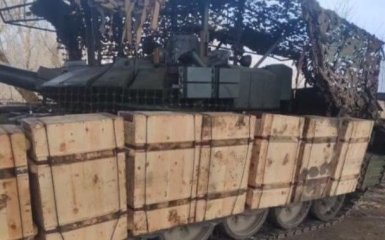According to Julian Röpke, a military analyst of the German edition of Bild, the occupation army of the Russian Federation is losing dozens of tanks in the criminal war against Ukraine literally because of one mistake of the drivers of armored vehicles.
Points of attention
- The Russian occupation army is losing dozens of armored vehicles due to mistakes made by drivers of armored vehicles, leading to significant losses in the war against Ukraine.
- Ukrainian military successfully utilizes its own equipment against Russian invaders, with over a third of Ukrainian-made military equipment in service.
- Analysis shows that open hatches left by panicked Russian tankers fleeing damaged equipment make it easier for Ukrainian forces to destroy tanks and armored vehicles.
- The Ministry of Defense of Ukraine has received 110 samples of equipment and is purchasing Ukrainian equipment with state funds, increasing the deployment of domestically produced military equipment.
- Domestic production in Ukraine includes a variety of military vehicles such as armored cars, trucks, motorcycles, and special vehicles, strengthening the country's defense capabilities.
How one mistake leads to numerous losses by the occupying army of dozens of armored vehicles
It is noted that Ryopke analyzed the video on which the Ukrainian military destroys the so-called "turtle tank" of the Russian occupiers.
The analyst emphasized that initially the Russian tank was blown up by a mine, but was not destroyed, it simply lost the ability to move.
At the same time, the tank crew and the Russian occupants on board had time to leave the knocked-out tank.
Röpke notes that even a stationary "turtle tank" is very difficult to destroy.
However, the driver-mechanic, fleeing, left the inspection hatch in the front part of the car open.
It was there that a small Ukrainian kamikaze drone flew in and caused a powerful explosion.
If the hatch cover had been closed, it would have been much more difficult to destroy the tank.
Röpke noted that this is not the only such case and that the Russian occupiers lose equipment almost every day in almost the same way.
As a result, hundreds of tanks, armored personnel carriers and BMPs have already become victims of open hatches.
According to the analyst, the panic of the Russian tankers, who forget the need to close the hatch when leaving mine-damaged equipment, is to blame.
What is known about the use of Ukrainian-made equipment by the Armed Forces
According to the information of the Ministry of Defense of Ukraine, since the beginning of the invasion of the criminal army of the Russian Federation into Ukraine, the Ukrainian military received about 110 models of equipment.
It is noted that currently more than a third of all military equipment used by the Armed Forces at the front is produced in Ukraine.
The codification and admission of Ukrainian-made weapons to use allows for their purchase with funds from the state budget.
It is noted that over the past 5 months, 60 samples of domestically produced military equipment and weapons have been put into service with the Ukrainian military.
This includes armored cars, SUVs, trucks, motorcycles and special vehicles.
Models of off-road vehicles produced by Japanese and European automakers popular in the military, as well as the world's largest American tractor-transporter for off-road transportation of tanks, self-propelled artillery installations and other heavy armored vehicles, have been officially put into operation, the department emphasizes.
It is reported that more than a third of all samples of automotive equipment are of Ukrainian development and production.
Currently, our state is able to create special cars, armored cars, ordinary trucks, all-terrain vehicles and electric motorcycles of domestic production.




